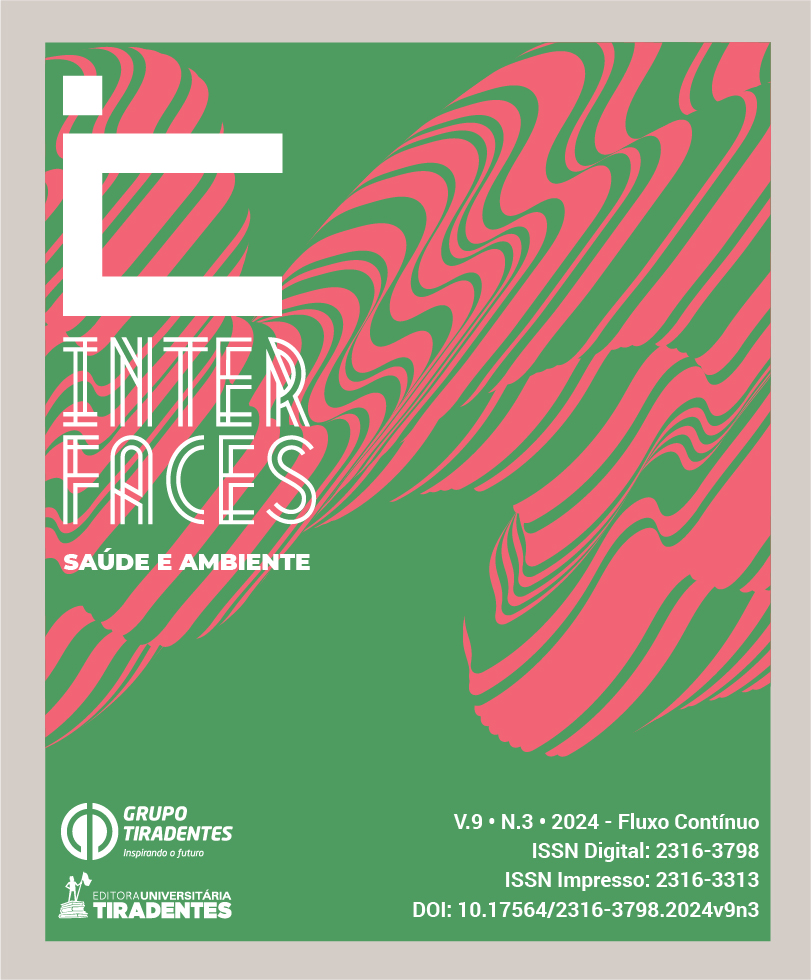SALUD OCUPACIONAL DE LOS BOMBEROS MILITARES DE UNA METRÓPOLIS AMAZÓNICA
DOI:
https://doi.org/10.17564/2316-3798.2024v9n3p183-200Publicado
Descargas
Descargas
Número
Sección
Licencia
Derechos de autor 2024 Interfaces Científicas - Saúde e Ambiente

Esta obra está bajo una licencia internacional Creative Commons Atribución-NoComercial 4.0.
Autores que publicam nesta revista concordam com os seguintes termos:
a. Autores mantêm os direitos autorais e concedem à revista o direito de primeira publicação, com o trabalho simultaneamente licenciado sob a Licença Creative Commons Attribution que permite o compartilhamento do trabalho com reconhecimento da autoria e publicação inicial nesta revista.
b. Autores têm permissão e são estimulados a distribuir seu trabalho on-line (ex.: em repositórios institucionais ou na sua página pessoal), já que isso pode gerar aumento o impacto e a citação do trabalho publicado (Veja O Efeito do Acesso Livre).
Resumen
Objetivo: Analizar las evidencias de salud ocupacional relacionado con los bomberos militares de la Región Metropolitana de Belém do Pará. Método: Estudio transversal, descriptivo y analítico. La recolección de datos fue realizada por medio de la aplicación de los cuestionarios WHOQOL-bref, MBI y Cuestionario Sociodemográfico/Ocupacional. Se realizaron pruebas G y Qui-Cuadrado Adherencia para tablas univariadas. Resultados: Entre los 275 BMs entrevistados, hubo mayor prevalencia del sexo masculino (89,8%), siendo 72,7% de la muestra perteneciente al grupo de los casados o en unión estable. La franja de edad comprendida entre los 31-40 años (39,6%) fue la más prevalente y el nivel de escolaridad más frecuente fue el superior completo (52,4%). El Whoqol-Bref, demostró que hay predominio de Calidad de vida clasificada como buena (52%), pero se muestran con los dominios Físico (77,8%), Medio ambiente (73,5%), Psicológico (72,7%) y Relaciones sociales (45,8%) regulares. El Síndrome de Burnout comienza a instalarse en el 47,3% de los BMs participantes en la investigación, así como se notó cansancio emocional elevado (42,9%). El análisis de correlación entre el MBI y el Cuestionario Sociodemográfico y Ocupacional, constató que los BMs con menor formación, presentan mayor índice de Burnout (r=-0,2368; p<0,0001), de la misma forma como hubo correlación negativa con la carga horaria semanal de trabajo (r=-0,1335; p=0,0278) y el período de trabajo (r=-0,1526; p=0,0119). Hubo significación estadística entre el dominio psicológico y la despersonalización (r= - 0,2651; p= <0,0001). Conclusión: BMs presentaron varios aspectos de su calidad de vida como regular y Síndrome de Burnout en instalación, con énfasis en el cansancio emocional elevado, resultante del estrés ocupacional.




















